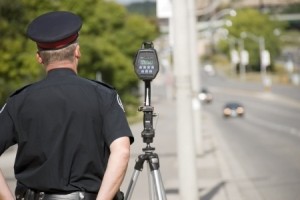Google's version of a radar detector is under fire from law enforcement groups.
Waze is billed as a hybrid GPS and social networking app. Users can log on and share information about, among other things, weather conditions, traffic patterns, road conditions and speed traps in Kern County. At the recent winter meeting of the National Sheriffs Association, officers referred to Waze as an "officer-stalking" app that could help potential evildoers target helpless peace officers.
Some pointed to the case of Ismaaiyl Brinsley, who posted a Waze screenshot on his Instagram account along with threatening messages directed at NYPD officers. But, according to investigators, Mr. Brinsley discarded his cell phone two miles from the place where he shot two policemen, and there is no other evidence that anyone has used Waze to target peace officers.
Nonetheless, one officer in Southern California is concerned that "it is only a matter of time" before tragedy strikes and I think we all share his concern that technology can be used in such horrible ways.
But in most situations, the underlying objection to Waze may be that motorists will slow down if they believe officers are present, thus depriving the state of needed revenue. Traffic tickets raise an estimated $4.5 billion per year, and speeding tickets in particular may be more about money for Tulare County than they are about keeping the roads safe.
There is some evidence that unmanned radar signs may reduce speeds more than an officer writing a ticket. Instead of fighting Waze, perhaps traffic officers should post their locations. If a virtual traffic cop can reduce speeding while the real traffic cops focuses on more urgent situations, so much the better.
It's important to note that individual officers are not responsible for this situation. They have a job to do, just like the rest of us and they oftentimes risk their neck to do it well. Instead, it is the system that puts revenue ahead of safety by continuing to refuse to put in adequate cool down lanes, passing lanes, middle dividers and other construction (that costs money) while instead focusing on artificially low speed limit enforcement in places such as interstates that normally have lower accident rates per mile driven.

